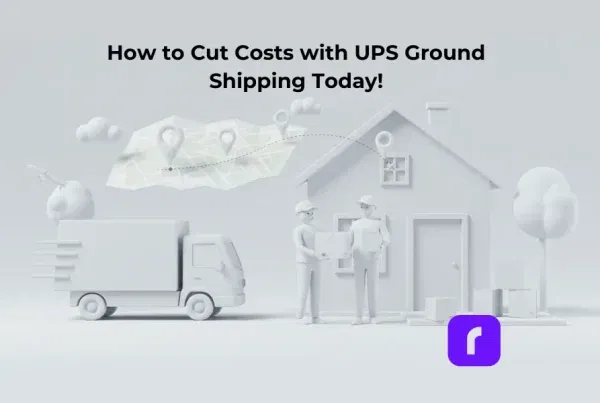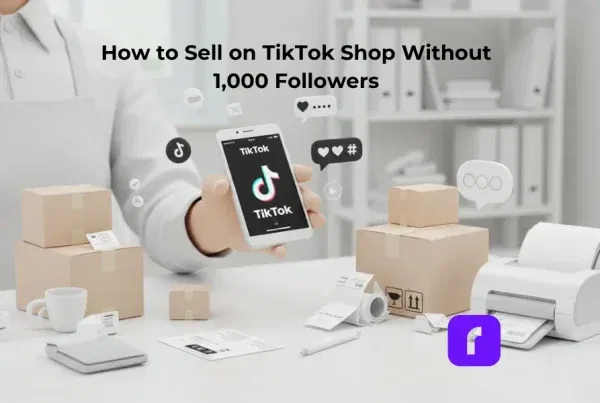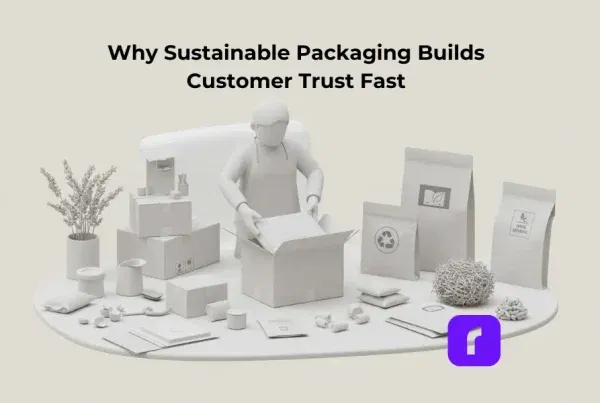Delivering orders on time and at a good price is key for any online business. Choosing the right shipping carrier affects your customers’ happiness, your costs, and your profits.
This article looks at major shipping carriers to help online sellers pick the best ones. It focuses on important factors like cost, speed, tracking, and compatibility.
We show how Rollo Ship connects sellers to many carriers. It gets discounted rates and provides helpful data to improve efficiency.
Understanding Shipping Carriers
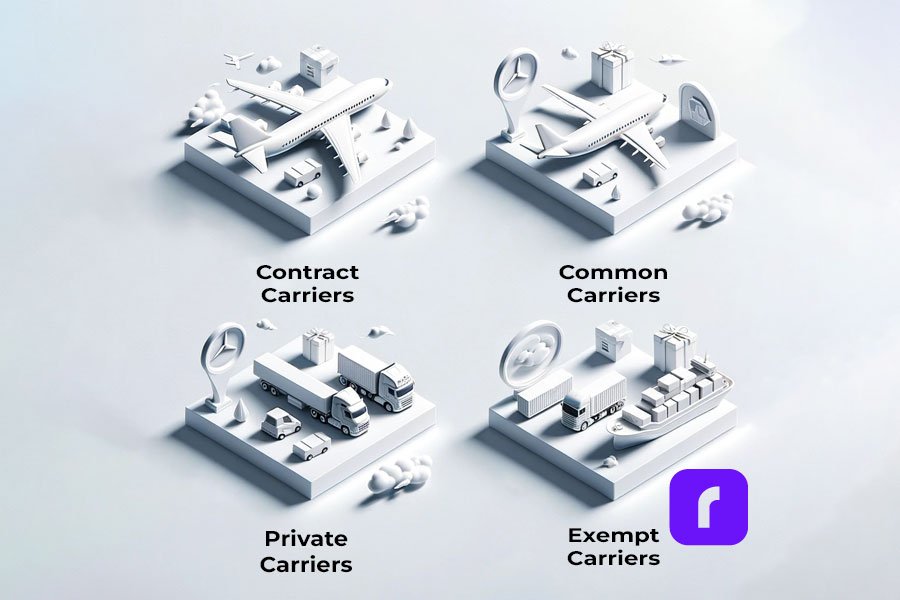
Main Types of Carriers
Broadly, there are four kinds of carriers:
- 🚚📦 Common Carriers: Major companies like FedEx, UPS, and USPS that offer standard services.
- 📦✍️ Contract Carriers: Private shippers contracted by a single company for specialized needs.
- 🏢🚐 Private Carriers: A brand or retailer’s own delivery service. For example, Amazon’s vans.
- 🛑📄 Exempt Carriers: Special circumstances exempt small shippers from some regulations.
Knowing these types helps sellers evaluate carriers. Important criteria: customization, integration, and cost-effectiveness for their business.
Rollo Ship easily connects with all the best shipping carriers.
Did you know? 🤔 In 2021 UPS, FedEx, and USPS collectively handle almost 90% of all e-commerce shipments in the United States. Each shipping carrier has unique strengths, making them indispensable to online sellers.

Choosing The Best Shipping Carrier
An online seller’s success depends heavily on fast and reliable shipping. So what’s the best shipping carrier?
⚠️ Keep in mind that when evaluating carriers, consider not just the cost but also the value-added services like tracking and insurance options, which can significantly impact customer satisfaction.
The best shipping carriers like USPS, UPS, and FedEx have huge networks making them versatile picks. USPS provides affordable postal services domestically and abroad. UPS promises fast ground and air transportation with doorstep deliveries. FedEx offers speedy express shipping and specialty solutions like cold chain logistics.
But sellers need to look deeper than just brand names. Evaluate transit times, costs, tracking visibility, billing terms, etc. based on product types and delivery requirements.
For example, UPS and FedEx are faster but cost more than USPS. Retailers focused on speed may prefer UPS/FedEx despite higher rates.
Rollo Ship allows comparing real-time rates across carriers to make informed trade-off decisions.
UPS vs FedEx Comparison
Choosing between UPS and FedEx needn’t be an either-or decision. Each shipping carrier excels on specific parameters catering to particular business needs.
FedEx Leads The Skys
FedEx leads for overnight air logistics including weekends. Its specialty cold chain solutions suit pharmaceuticals and healthcare too. Custom Critical offers round-the-clock urgent shipments for atypical items like medical equipment.
UPS Dominates The Road
UPS dominates ground residential deliveries through partnerships, e.g. with USPS for cost efficiencies. UPS Capital also equips e-commerce sellers with multi-carrier, multi-modal shipping insurance and additional services to reduce risks and preserve cash flow.
- 📦🛠️🏪🌐 For multichannel brands, UPS provides shipping tools and more in-store service outlets nationwide as convenient pickup/dropoff points.
- ❓🆚📈🔍💼 So instead of a broad ”Is UPS better than FedEx?” question, evaluate their differentiated strengths aligned to product types, routes, and working capital needs.
- 🚢⚖️📊🎯 Rollo Ship allows impartial shipping carrier capability and rate benchmarking tailored to business priorities.
PRO TIP: For shipments requiring fast delivery within the United States, FedEx's overnight options might be more cost-effective, especially for lighter packages. However, for heavier shipments or less urgent deliveries, UPS Ground can offer substantial savings.
| Carrier | Discounts with Rollo Shipp | Features and Benefits |
|---|---|---|
| UPS | Yes | Discounted UPS rates for various shipping options. |
| USPS | Yes | Competitive USPS rates for domestic and international. |
| FedEx | Account linking available | Integration with Rollo for streamlined FedEx shipments. |
Optimizing Shipping Strategies
Fast Shipping Options
For internet buyers wanting instant gratification, fast delivery wins market share. What’s the fastest shipping carrier option?
FedEx and UPS provide the quickest global ground and air transportation. In the US, UPS Ground offers 1-5 days nationwide delivery with economy alternatives too.
UPS Next Day Air® Early ensures guaranteed delivery by 8 AM to major cities and for most cities between 8:30 AM and 9:30 AM the next business day for urgent shipments. FedEx First Overnight® ensures items arrive by 8-9:30 AM in most areas, with some locations by 2 PM the next business day. Though expensive, these overnight services enable lightning-fast fulfillment.
But raw speed can’t be the only deciding factor. Sellers must balance velocity with reliability, costs, item characteristics, etc.
Rollo Ship allows easily comparing delivery speeds and pricing across carriers to determine the optimum fit. Its automated workflows streamline expedited shipments.
Did you know? 🤔 Choosing a shipping option with a delivery guarantee can sometimes be more cost-effective than opting for the fastest delivery time. Carriers often refund the shipping costs if the delivery guarantee is not met.
Lowering Shipping Costs
Surging shipping expenses continue to squeeze online seller profits. How can costs be reduced then?
➡️ Step 1: Compare rates based on product type, shipping zone, and season. Dimensional pricing can make it difficult to determine the actual costs for light items compared to heavy items.
➡️ Step 2: Leverage rate calculators and forecasts to refine packaging and transactional discounts based on order history. Use your account pricing not retail rates for better deals. Consider zone skipping from distant hubs to save last-mile costs.
➡️ Step 3: Maintain reliability though. Hidden fees and contract breach penalties can outweigh apparent savings.
Rollo Ship enables effortless rate benchmarking across carriers and regions. Customized analysis identifies shipping discounts, balancing speed and efficiency.
⚠️ Keep in mind Dimensional weight pricing means that the space your package occupies on a vehicle may cost more than its actual weight. Optimizing packaging to reduce volume can lead to significant savings.
Finding the Most Affordable Shipping Carrier
How can e-commerce sellers identify and access the most budget-friendly shipping carrier options? Comparing rates across providers based on product weight brackets, zones, and surcharges serves as a baseline benchmark.
Large shippers can additionally negotiate custom contracts with volume discounts factored in. However, evaluating logistics infrastructure support capabilities remains equally imperative – choosing an inexperienced courier just for cost savings can negatively impact orders and customers.
Coping with Fulfillment Spikes
Peak trading events can overwhelm e-commerce operations with a barrage of orders. Robust preparation and coordination with partners help smooth these spikes. Forecasting additional staffing, inventory, and shipping bandwidth required well in advance is key.
Big sellers can stipulate volume-based contingencies in partner and shipping carrier contracts. Smaller companies can use aggregators like Rollo Ship to handle overflow requirements. Staggering promotions over a longer timeframe also evenly distributes order volumes.
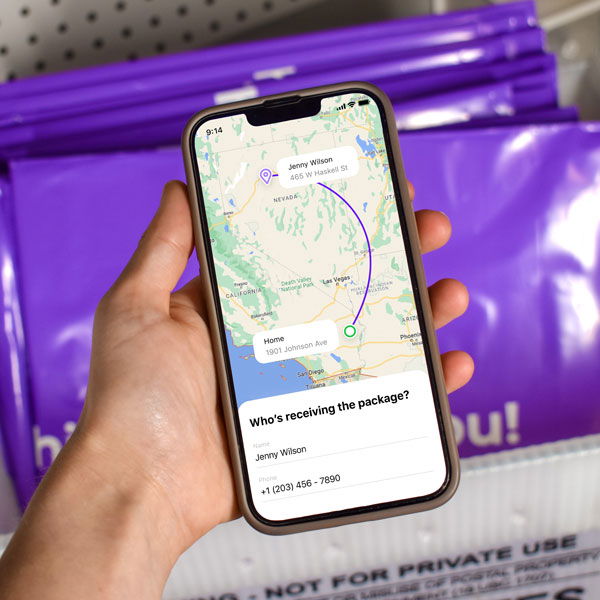
Enhancing Shipping Operations
Streamlining Operations via Technology
Leveraging technology is now imperative, not optional, given mammoth e-commerce order volumes.
- 🤖 Automated systems can capture purchases, print labels, provide tracking updates, check addresses, reconcile invoices, etc. Removing these manual tasks boosts productivity.
- 💰 Built-in rate shopping engines dynamically find the least-cost shipping carrier for every order. Batch printing, customs forms, manifests, etc. also optimize bulk fulfillment.
- 👀 End-to-end visibility via tracking alerts, analytics, etc. helps avoid stalled orders and customer disputes too.
Rollo Ship delivers these benefits by automating complex processes like international shipping compliance at scale. Integrating a high-quality commercial label printer into this ecosystem further elevates operational efficiency, ensuring that every package is labeled accurately and dispatched without delay.
PRO TIP: Integrating your shipping software with inventory and customer management systems can streamline operations, reduce errors, and improve customer communication.
The Role of Process Automation
Order processing automation can tremendously improve productivity for transaction-driven e-commerce businesses. Automated systems save time and prevent errors by capturing purchases, checking addresses, printing labels, providing tracking updates, and reconciling carrier invoices. This frees up staff from repetitive manual work.
Built-in rate shopping engines dynamically identify the least-cost shipping options for every order. Integrated analytics drive further optimizations in packaging, allocation, and delivery timelines. Rollo Ship specializes in enabling such intelligent automation seamlessly across client systems and workflows.

Getting Discounted Rates
Large shippers can negotiate custom rates with big carriers because of their high volumes. These special rates match their common product types and shipping routes. Even small sellers can get pre-negotiated discounts from shipping aggregators like Rollo without huge order volumes.
By combining bargaining power across all their clients, these logistics platforms secure exclusive pricing impossible for individual online stores. So working with specialists like Rollo Ship allows merchants of any size to reduce shipping costs and improve efficiency.
Managing Global Shipping Challenges
Navigating Global Shipping
Expanding overseas brings geographical and regulatory intricacies in shipping. Choosing between air, sea, and road transport, brokers, etc. gets complex.
Typically, e-commerce sellers engage major parcel carriers like DHL Express, FedEx, or UPS for international package delivery given their global reach spanning 220+ countries.
US sellers must also confirm officially approved air, sea, and land carriers overseas to comply with Federal Maritime Commission rules.
Platforms like Rollo Ship simplify these nuances for compliant trouble-free worldwide shipping. It integrates leading domestic and global couriers, staying updated on evolving customs and regulations.
Did you know? 🤔 Customs duties and taxes can account for a significant portion of the total shipping cost when shipping internationally. Using a shipping carrier that offers customs brokerage services can simplify the process and avoid delays.
Shipping Internationally
For brands targeting worldwide markets, navigating myriad shipping regulations and customs can seem daunting initially. Working with carriers intimately aware of each region’s protocols, paperwork trail and tariffs enables rapid global scale. US entities must pay special attention to officially designated trade channels and overseas documentation mandates. Solutions like Rollo Ship and freight forwarders ease cross-border intricacies by centralizing country-specific compliance stipulations.

Focusing on Sustainability and Efficiency
Rightsizing Packaging
Optimizing parcel packaging significantly impacts cost-efficiency and sustainability. Precision-fitting cartons and protective padding to products reduce dimensional weight expenses charged by carriers. Minimizing packaging volume also lowers waste.
However adequate insulation against damage remains non-negotiable for fragile goods. Solutions like Rollo Ship can suggest optimum box and mailer sizes balancing these factors.
Adopting Eco-Friendly Practices
With sustainability becoming imperative, e-commerce entities must integrate green considerations in supply chains. Eco-packaging, right-sized parcels, shipment consolidation, carbon offsetting via volumes, localized sourcing, etc. render operations greener.
Return/reuse programs that give products multiple life cycles further advance environmental goals. Small firms can embrace such initiatives by partnering with logistics aggregators like Rollo Ship implementing sustainability across their network.
⚠️ Keep in mind Using eco-friendly packaging not only reduces environmental impact but can also resonate with customers, enhancing brand loyalty and potentially driving sales.
Improving Customer Experience
Improving Delivery Transparency
Proactively updating customers regarding order status via tracking and notifications improves the experience even for relaxed delivery options. Unifying multi-carrier tracking in online storefronts enables centralized visibility without managing disparate portals.
For international purchases, accounting for customs procedures and exchange zones sets realistic delivery expectations. Frequent, contextually relevant communication is key – especially on any exceptions.
PRO TIP: Providing customers with options for delivery dates and times can significantly enhance satisfaction. Consider carriers that offer flexible delivery services.
Insuring Deliveries
Despite best efforts, in-transit damage or losses remain inevitable at the e-commerce scale. Having adequate parcel insurance and formally declaring merchandise value provides a financial buffer to recover such episodic costs. Tracking goods with precision through transit forms the foundation for submitting carrier liability or insurance claims. Specialized solutions like Rollo Ship proactively flag exceptions before customer complaints occur, minimizing the probability of claims.
Effortless Returns Process
Managing returns is integral for customer satisfaction, revenue retention, and cost control. Defining flexible but unambiguous return policies and providing rapid no-questions-asked options builds goodwill. Dedicated portals for initiating returns including prepaid shipping labels minimize buyer effort.
However, efficiently processing returned inventory, reimbursing credits, and evaluating restocking feasibility quickly becomes complex without automation. Specialized solutions like Rollo Return software handle these multifaceted reverse supply chain tasks while minimizing overheads.
Maximize Your Shipping Efficiency with Top Carriers!
Enjoy Big Savings on the Go!
Use the Rollo Ship App on your Desktop or your mobile,
compare rates and print shipping labels from leading carriers effortlessly.
Final Words
Did you know? 🤔 Streamlining your logistics processes is a key strategy for customer retention in the logistics industry. Customers expect fast, efficient shipping and delivery, and any delays or issues can significantly impact their experience, influencing their decision to continue doing business with you.
Strategically selecting and managing shipping carriers can generate tremendous ROI for e-commerce businesses. As we saw, major carriers have specific strengths suiting particular business needs.
Adaptable solutions like Rollo Ship serve as a pivotal tool for sellers in this decision process. The system provides a single view and access to a tool that compares rates from multiple carriers. It also has automation features that help businesses improve shipping efficiency and reduce costs.
Online sellers can focus on innovation and customer service by letting logistics partners handle shipping tasks. This leads to e-commerce success.
Follow Rollo on:
Frequently Asked Questions about The Best Shipping Carrier for eCommerce:
📌 Q: What Defines a Shipping Carrier?
💭 A: A shipping carrier is an entity responsible for transporting goods from the sender (shipper) to the recipient (consignee). The shipper, typically the owner or supplier of the commodities, entrusts their goods to the shipping carrier for delivery. Carriers play a crucial role in the logistics chain by ensuring the safe and timely delivery of packages.
📌 What are The Four Main Types of Shipping Carriers?
💭 A: Shipping carriers are categorized into four main types, each designed to meet specific shipping needs. These categories include local carriers, ideal for nearby deliveries; regional carriers, covering broader areas within a specific region; national carriers, which operate across the country; and consolidated carriers, which amalgamate shipments from various shippers for efficiency.
📌 How Do Shippers and Carriers Differ?
💭 A: The key difference between a shipper and a carrier lies in their roles within the shipping process. A shipper, also known as a consignor, is the originator of the goods being shipped, often the producer or seller. The carrier, on the other hand, is the service provider tasked with the physical transportation of goods, bearing responsibility for any loss or damage incurred during transit.
📌 Between UPS and USPS, Which is More Economical for Shipping a 20 lb Box?
💭 A: Choosing between UPS and USPS for shipping a 20 lb box depends on various factors, including package dimensions and destination. Generally, USPS offers more cost-effective solutions for packages weighing up to 70 lbs, which is their weight limit for shipping. However, it’s worth considering shipping with Rollo Ship to access discounts on UPS and USPS shipping rates, potentially making both carriers more affordable depending on your specific needs. For the most accurate pricing, it’s recommended to check the Rollo app or the carrier’s website directly. For packages exceeding 70 lbs, UPS Ground and FedEx Ground present the most affordable options, albeit with longer delivery times.
